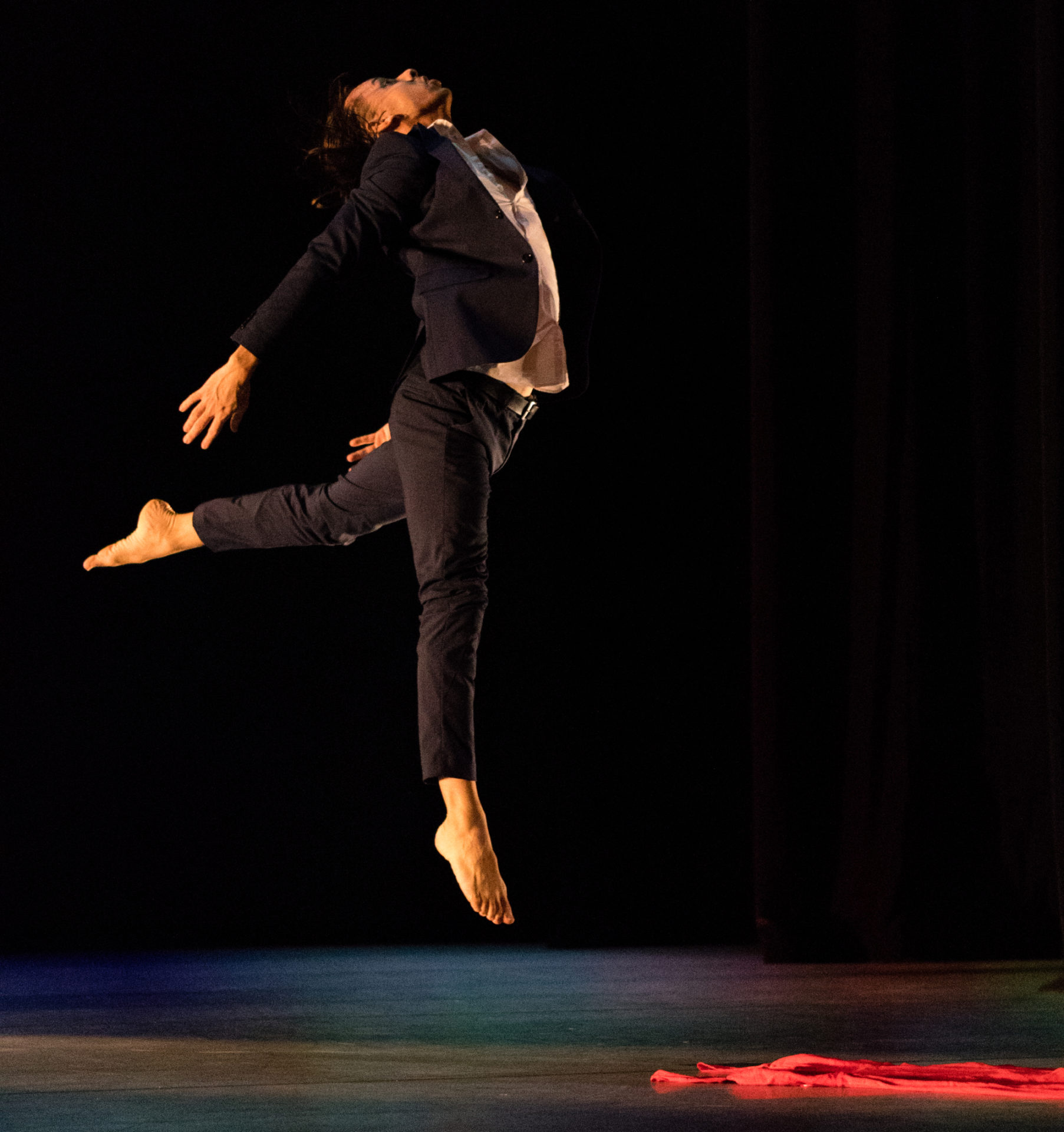Dance at Illinois’ annual February Dance program returns this weekend with the work of five choreographers: Elliot Reza Emadian, Jaymes Crowder-Acres, Banafsheh Amiri, Sojung Lim, and Anna Peretz Rogovoy. You’ll be able to view the work of faculty, graduate students, and undergraduate students in this 90 minute spectacle of excellence. Each Dance at Illinois program — February Dance, October Dance — is an opportunity to bring together as peers undergraduates, graduates, and faculty to showcase the ever-evolving field of dance and the potential that comes from removing some of the traditional barriers that have denoted whose work is worthy of attention. In all of the February and October programs I’ve attended, I’ve been impressed by the skill and creativity on display, as well as the generosity of the audience and performers to create a supportive and enthusiastic environment.
I recently spoke with Jacob Henss, concert co-director for this iteration of February Dance, about what we might expect this weekend. Read our interview below.
This interview has been edited for length and clarity.
Smile Politely: Tell me a little about yourself. What’s your relationship to Dance at Illinois, and how did you come to be the concert director for this production?
Jacob Henss: I am a professional dancer from the St. Louis area. I earned my MFA in Dance at the University of Illinois and then transitioned into teaching and working for Dance at Illinois and Millikin University in many capacities, including concert director. Last year, I was the assistant concert director under Sara Hook. And now I am grateful to be the co-concert director along with Paige Cunningham Caldarella.
SP: Can you tell me about the curation process? When do students audition or submit their work for selection, and what’s the rehearsal process like?
Henss: Students audition in the beginning of Fall semester. Once cast, they rehearse for eight weeks, four days a week, two hours a day. The curation for this concert blends performance spaces for faculty, grad students, and undergrad students. You see all three as choreographers and dancers.
SP: Are there unifying themes or ideas for these pieces?
Henss: There is not an overall theme besides movement and movement research. Each choreographer has their own content and creates their own world within the work. The range of bodies and movement vocabularies of Iranian dance, House dance, and Post-Modern and Contemporary dances showcase the vibrancy and fierce physicality that is the hallmark of a Dance at Illinois artist.
SP: What excites you most as a concert director? And as a viewer?
Henss: What excites me the most is being a part of the process and seeing the collaboration between all the fantastic artists involved with the production, such as lighting designers, costumes designers, composers, sound engineers, movement artists, and musicians.
SP: Tell me a little about the two MFA candidate theses. What does it mean for them to have the opportunity to stage this work for Champaign-Urbana and U of I communities?
Henss: The opportunity to share a grad thesis is special. A performance of the caliber is difficult to stage in the same capacity for dancers in the industry. Anna Peretz Rogovoy’s work, Good Girl, crashes into notions of dominance, legacy, and beauty. Sojung Lim’s Chronic Translation (번역번역 고질 ) reflects on her presence in the United States and South Korea by looking at feelings of alienation and belonging while oscillating between two cultures. Dance at Illinois is showcasing the cultural diversity of the community.
SP: How does this February Dance dialogue with previous iterations?
Henss: February Dance does not have specific dialogue with past iterations, but it is a continued value and goal for this performance to showcase various artists from the Dance at Illinois community. A particular goal this year was to include an undergraduate student, and Jaymes Crowder-Acres was our choice. We are attempting to shift the field of dance by valuing undergraduate work equally with work by faculty and grad students.
SP: What should audiences expect? What about these pieces do you think they will find most engaging?
Henss: We hope audiences will engage with the eclectic platter of dances. Some of them will challenge our audience through abstract expression, while other pieces will have heartfelt transmissions. A program like this is unpredictable as to what each audience member will resonate with, but I am certain everyone will experience an earnest moment of connection.
February Dance
Krannert Center for the Performing Arts
500 S Goodwin Ave
Urbana
Th Feb 1st through Sa Feb 3rd, 7:30 p.m.
$10-$60
A livestream of the event will be available at 7:30 p.m. on Wednesday, January 31st.








